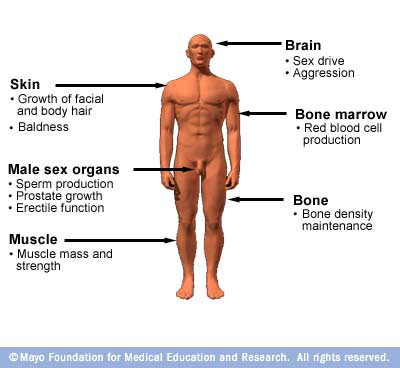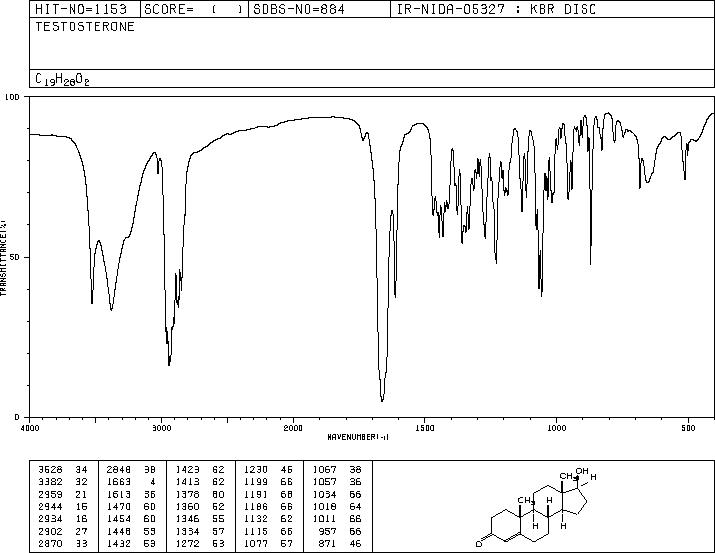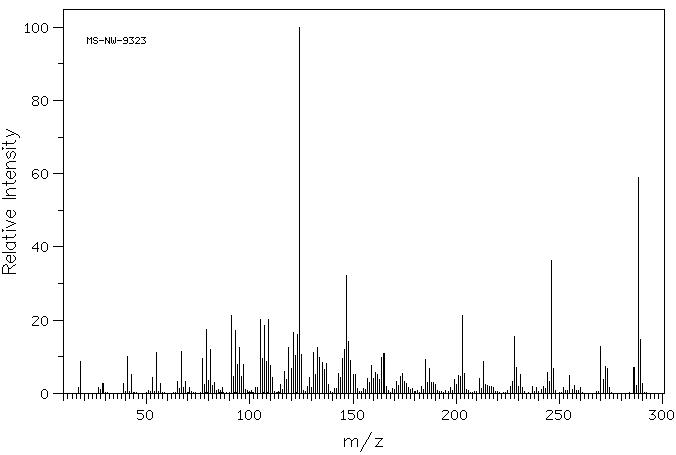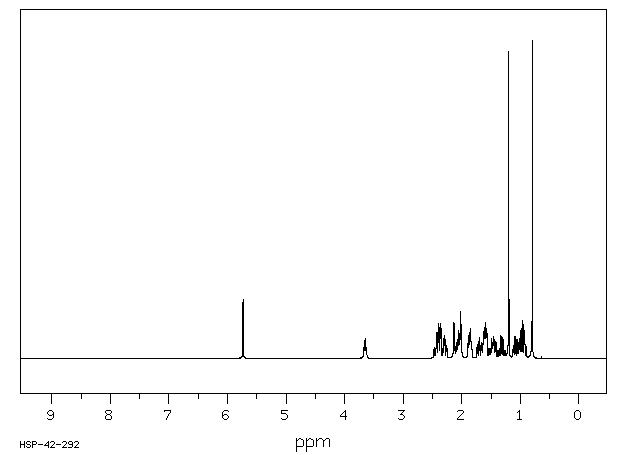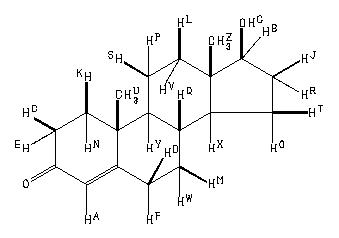It07:Testosterone
| Testosterone | |
|---|---|
 | |
| IUPAC Systematic name | |
| IUPAC_name = (8R,9S,10R,13S,14S,17S)-17-hydroxy-10,13-dimethyl-1,2,6,7,8,9,11,12,14,15,1
6,17-dodecahydrocyclopenta[a]phenanthren-3-one | |
| Indentifiers | |
| ATC Code | G03BA03 |
| CAS number | 58-22-0 |
| PubChem (CID) | 6013 |
| SMILES | [http://www.emolecules.com/cgi-bin/search?t=ss&q=CC12CCC3C(C1CCC2O)CCC4=CC(=O)CCC34C
CC12CCC3C(C1CCC2O)CCC4=CC(=O)CCC34C] |
| Chemical Data | |
| Molecular formula | C19H28O2 |
| Molar mass | 288.43g/mol |
| Pharmacokinetic Data | |
| Bioavailability | low (due to extensive first pass metabolism) |
| Metabolism | Liver, Testis and Prostate |
| Half life | 2-4 hours |
| Excretion | Urine (90%), feces (6%) |
| Therapeutic considerations | |
| Pregnancy cat. | X (USA), Teratogenic effects |
| Legal status | Schedule III (USA)
Schedule IV (Canada) |
| Routes | Intramuscular injection, transdermal (cream, gel, or patch), sub-'Q' pellet |
Introduction
The human body produces testosterone, which is the most important male sex hormone. Testosterone is an essential steroid hormone, which is from the androgen hormone group. Testosterone is primarily secreted in the testes of males, which is where the hormone is produced, and the ovaries of females. Minute amounts are secreted by the adrenal glands, which can be found on top of the kidneys. It is the main male sex hormone and it is an anabolic steroid. Testosterone is responsible for development of male characteristics like body and facial hair, muscle growth, strength, and a deep voice. Testosterone at the normal levels in the body influences the production of sperm, which ties in with the promotion of sexual function and in the promotion of sex drive.
Functionality
The hormone, testosterone, effects humans and other vertebrates by either of the two main hormonal mechanisms; first of these mechanisms is by activation of the androgen receptor (either directly or as DHT) or second is by the conversion to estradiol and the activation of certain estrogen receptors.
Free testosterone (T) is transported into the cytoplasm of target tissue cells, where it can bind to the androgen receptor, or can be reduced to 5α-dihydrotestosterone (DHT) by the cytoplasmic enzyme 5-alpha reductase. DHT binds to the same androgen receptor even more strongly than T, so that its androgenic potency is about 2.5 times that of T.[citation needed] The T-receptor or DHT-receptor complex undergoes a structural change that allows it to move into the cell nucleus and bind directly to specific nucleotide sequences of the chromosomal DNA. The areas of binding are called hormone response elements (HREs), and influence transcriptional activity of certain genes, producing the androgen effects. It is important to note that if there is a 5-alpha reductase deficiency, the body (of a human) will continue growing into a female with testicles.[1]
The testerone androgen receptors occur in a large number of different vertebrate body system tissues. Both sexes respond quite similarly to levels of testerone. There is a large difference in the amount of testosterone found in each sex at prenatally, at puberty, and throughout life and this accounts for the share of characteristic biological differences between the sexes.
The brain and the skeletal system are two important tissues in humans, where the principle effect of testosterone is to carry out aromatization of the estradiol. In the bones, estradiol speeds up the maturation of the cartilage into bone and thus leads to the closure of the epiphyses and signals the completion of bone growth.
In the CNS (central nervous system), testosterone is aromatized to estradiol. Not testosterone but estradiol that serves as the most important hormonal feedback signal to the hypothalamus (plays a major role in LH release/production). In a number of mammals, prenatal or perinatal "masculinisation" of the sexually dimorphic sections of the brain by estradiol. This will lead to male sexual behaviour in later life for the mammal.
The diagram, above, shows the areas of the body that are affected by testosterone.
Production
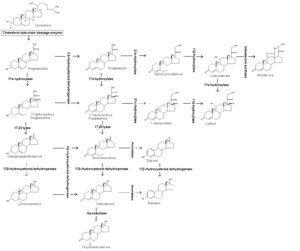
The 3D Molecular Structure
Hyoscine |
Spectroscopic Data
IR Spectrum: Testosterone
Mass Spectrum: Testosterone
H-NMR Spectrum: Testosterone
Assignments
Assign. Shift(ppm)
A 5.731
B 3.655
C 2.424
D 2.391
E 2.347
F 2.278
G 1.6
J 2.084
K 2.034
L 1.862
M 1.848
N 1.702
O 1.628
P 1.603
Q 1.579
R 1.466
S 1.436
T 1.313
U 1.198
V 1.093
W 1.007
X 0.978
Y 0.932
Z 0.795
ASSIGNED BY 600MHZ,C-H COSY,H-H COSY,NOESY AND LAOCN CALCULATION.
K.HAYAMIZU ET AL,MAGN.RESON.CHEM.,28,(1990). [2]

